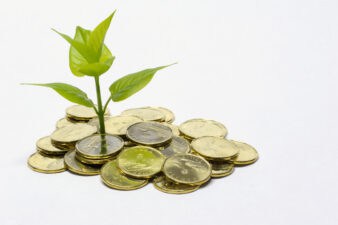With few exceptions, the massive dividends that energy investors have enjoyed over the past few years are either gone, or substantially reduced.
While the big names in the sector—like Suncor Energy, Imperial Oil, or Canadian Natural Resources—have managed to keep payouts steady, they’re helped by the fact that they never paid out much to begin with. The biggest yield of the three belongs to Suncor, which only pays out a dividend of 3.2%. That’s a far cry from many of the medium-sized companies in the energy patch, some of which were paying out double or even triple that much.
Many investors who were attracted to these huge payouts got burned as the price of crude collapsed. Company after company cut their dividends, reducing yields to more manageable numbers. Earnings just weren’t enough to support the payouts, especially in a world where oil trades below $60 per barrel.
There was one notable exception though, and that’s Crescent Point Energy Corp. (TSX:CPG)(NYSE:CPG). Crescent Point has paid investors the same $0.23 per share monthly dividend since 2008, and management has gone on record declaring the dividend is safe, even during these tumultuous times.
But is that really the case? Can investors really count on a dividend that’s currently higher than 12%? Let’s take a closer look.
Underneath the hood
One of the main reasons why management is so confident in the dividend is because of the company’s hedging program.
When times were good, Crescent Point locked in higher prices for much of its production. Throughout the rest of 2015, the company has more than 50% of production hedged at prices of approximately $85 per barrel. The program continues to 2016, where it has locked in prices between $80-85 for 30% of production.
Crescent Point is also one of the best operators in the sector, consistently posting some of the lowest operating costs. This leads to outsized profits that the company has mostly been using to invest in new production. It’s a pretty common formula for growth companies, except most growth companies don’t pay a 12.5% dividend.
And there’s where the problem lies, even with the hedging program. Crescent Point wants to keep growing while giving investors that generous yield. If the price of crude recovers, it’ll work out fine. But if not, there will be a dividend cut at some point. It’s only a matter of time.
In the first quarter of the year, Crescent Point generated $398 million in cash from operations, while spending $571 million on capital expenditures. That’s a free cash flow of negative $173 million, which doesn’t bode well for any dividend.
If we project those results over a whole year, the picture doesn’t get any better. We’re looking at approximately $1.6 billion in funds flow, and management has indicated it plans to spend $1.45 billion on capital expenditures. That’s a projection of just $150 million in free cash flow compared to a dividend that totaled $834 million in cash in 2014. A shortfall of nearly $700 million is a lot, even for a company the size of Crescent Point.
It gets worse. The company manages to convince many of its shareholders to take the dividend in the form of additional shares, offering investors a 5% bonus to do just that. If every investor took their payout in cash, the company would be on the hook for $1.24 billion annually. As the dividend becomes less and less likely to be maintained, at least some investors will switch to getting cash rather than shares.
And, of course, this shortfall will be even larger next year if the price of crude doesn’t recover. Only 30% of next year’s production is hedged, so cash flow projections for 2016 don’t look very pretty as it stands now.
The company has been able to issue debt and new shares in the past at a rate high enough to pay for the dividend. But as oil’s bear market continues, it’ll likely become tougher to convince bankers and investors to continue pouring money into the sector. If that happens, unless Crescent Point drastically cuts capital expenditures, I don’t see how it can maintain the dividend. Income investors, tread lightly around this one.
 Claim Membership Credit
Claim Membership Credit






